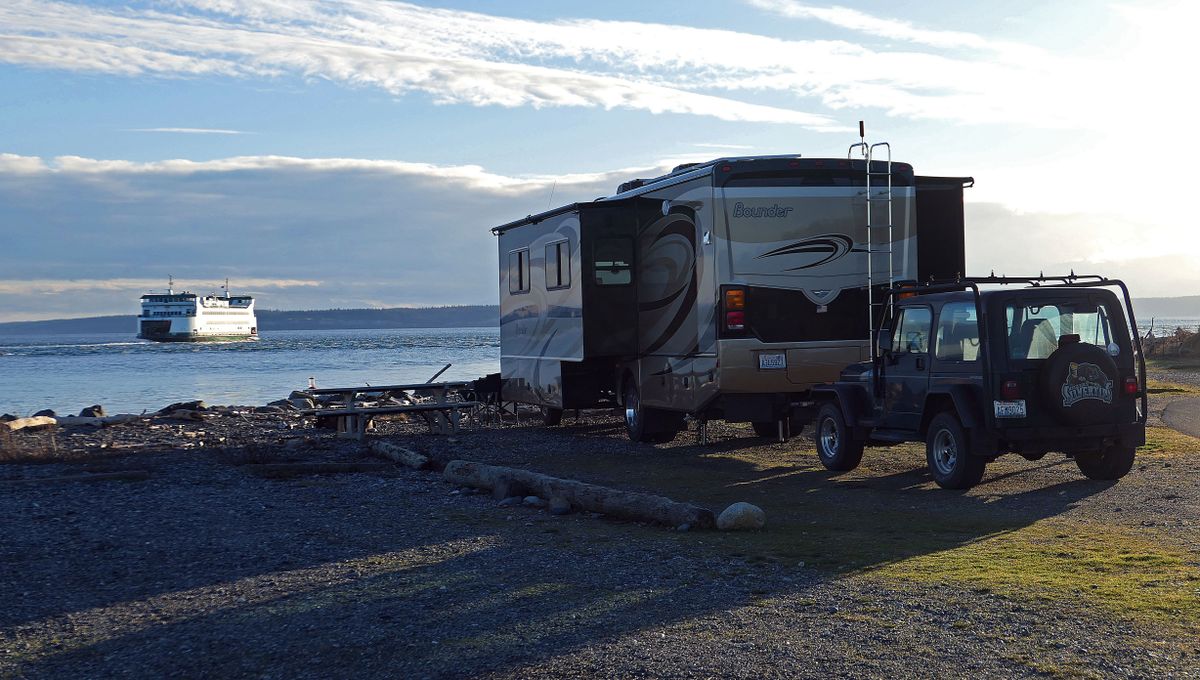Triangle of Fire has been transformed into a wonderful camping experience

Once, a trio of forts guarded the entrance to Puget Sound with massive guns. Today, those same forts offer some of the best camping in the Northwest for RVers.
Let’s start at the beginning. More than 120 years ago, in the interest of national security, three forts were built on Admiralty Inlet near the Strait of Juan de Fuca.
On Whidbey Island, you had Fort Casey. Across Admiralty Inlet, near Port Townsend, you had Fort Worden. And just to the south of Port Townsend, you had Fort Flagler on Marrowstone Island.
Together, the three forts were called the “Triangle of Fire,” a powerful defense designed to make it impossible for an invading warship to enter the waters of Washington state. And for about half a century, those forts stood guard on Puget Sound, staffed with troops at the ready.
After the end of World War II, the forts were deemed obsolete and abandoned by the federal government, eventually becoming what are now three exceptional state parks.
That’s where your RV comes in. At some point, you need to camp at Fort Casey State Park, Fort Worden State Park, and Fort Flagler State Park. Each offers some of the best campsites with incredible access to the waters of Puget Sound.
The Triangle of Fire is now the Triangle of Campfires.
We recently visited our second of these three fine parks. In early February, we stayed at Fort Casey, where the campsites are right next to the Port Townsend-Coupeville Ferry. It was cold, yet sunny, and we enjoyed a stunning day on the water’s edge.
One of the very best reasons to camp at Fort Casey is to explore the coastal access. Sites are right next to the water, and the occasional arrival of the ferry grandly reinforces that fact.
If you’re really lucky, you’ll have a clear day. The campsites are on a south-facing beach, and it’s lovely to sit in the sun and watch the ferries come and go.
Staying at the park also puts you in a perfect place to explore the bunkers of the former fort, situated on a nearby bluff with sweeping views of Puget Sound. The picturesque Admiralty Head Lighthouse also begs your attention.
You’re about 15 minutes from beautiful Ebey’s Landing National Historical Park, home of the very best beach hiking in Washington state.
So far we’ve stayed at Forts Casey and Worden. Both parks offer those gorgeous views and incredible beach access, with powered RV sites.
Next on our list in the Triangle of Campfires is Fort Flagler. Like Fort Casey and Worden, Flagler’s campsites are right next to the beach, where guns have made way for peaceful public access.
Another favorite fort
Did the “Triangle of Fire” ever face an attack?
Short answer: Nope.
During World War II, the only U.S. fort to come under fire in the contiguous United States was Oregon's Fort Stevens on the mouth of the Columbia River. In 1942, a Japanese sub surfaced in the Columbia and hurled a few shells toward that section of the Oregon Coast.
The submarine never really engaged in an all-out attack, but the brief skirmish prompted a public scare of further invasions all up and down the West Coast.
Today, you can stay at Fort Stevens State Park, another exceptional place to camp. We loved pedaling around the miles of roads and trails, poking around beaches and bird watching last fall and look forward to returning one day soon.
